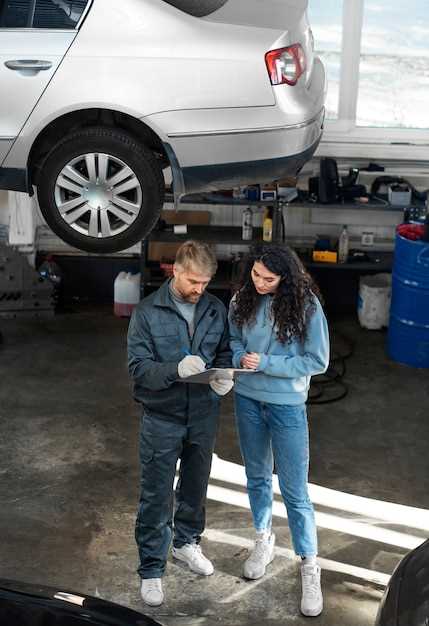Essential maintenance tips for first-time car owners


Becoming a car owner is an exciting milestone, but it also comes with the responsibility of proper maintenance. Understanding the basics of vehicle upkeep is essential for ensuring your new investment runs smoothly and efficiently. For first-time owners, navigating the world of car maintenance can feel overwhelming, but with the right knowledge, you can keep your vehicle in optimal condition.
Regular maintenance not only prolongs the life of your car but also enhances safety and performance. As a first-time owner, recognizing the importance of routine checks such as oil changes, tire rotations, and brake inspections can save you time and money in the long run. Familiarizing yourself with your vehicle’s maintenance schedule, as outlined in the owner’s manual, is crucial for staying on top of necessary services.
In this article, we will explore practical tips and essential maintenance tasks that every first-time car owner should know. By implementing these strategies, you can ensure a smooth driving experience and build a strong foundation for your journey as a responsible vehicle owner.
Understanding Your Vehicle’s Owner Manual

As a new vehicle owner, familiarizing yourself with the owner’s manual is crucial for ensuring the longevity and optimal performance of your car. The owner’s manual serves as your primary guide to understanding the specific features, maintenance requirements, and operational protocols of your vehicle.
First, locate the section that details routine maintenance schedules. This includes oil change intervals, tire rotations, and brake inspections. Following these recommendations is vital for maintaining your vehicle’s performance and preventing costly repairs down the road.
Next, pay attention to the information regarding warning lights on your dashboard. Understanding what each light signifies can help you address issues before they escalate. For example, a check engine light may indicate a minor issue, but ignoring it can lead to serious mechanical failures.
Additionally, the manual provides essential information about the correct specifications for fluids, such as engine oil, coolant, and transmission fluid. Using the recommended products ensures your vehicle runs smoothly and avoids damage caused by incorrect fluid types.
Another important aspect is the section dedicated to safety features. New vehicle owners should be aware of how to operate airbags, stability control systems, and other safety mechanisms to ensure the highest level of protection for themselves and their passengers.
Lastly, the owner’s manual often includes troubleshooting tips for common problems. This resource can save you time and money by enabling you to resolve minor issues without a trip to the mechanic.
By taking the time to thoroughly read and understand your vehicle’s owner manual, you empower yourself with knowledge that enhances your experience as a new car owner and contributes to the vehicle’s overall health.
Essential Fluids: Checking and Changing Regularly
For a new owner, understanding the importance of essential fluids in your vehicle is crucial for maintaining its longevity and performance. Regular checks and timely changes can prevent numerous issues and ensure your car runs smoothly.
First and foremost, familiarize yourself with the different types of fluids that require attention: engine oil, coolant, transmission fluid, brake fluid, and power steering fluid. Each plays a vital role in your vehicle’s operation.
Engine oil lubricates moving parts, reduces friction, and helps maintain optimal engine temperature. As a new owner, you should check your oil level regularly and change it according to your manufacturer’s recommendations, typically every 5,000 to 7,500 miles.
Coolant is essential for regulating engine temperature and preventing overheating. Inspect the coolant level in the reservoir monthly, and top it off if necessary. Replace the coolant entirely every two to three years to prevent corrosion and buildup.
Transmission fluid is key for smooth gear shifts and overall drivability. Check the level periodically and change it every 30,000 to 60,000 miles, depending on your vehicle type. Low or dirty transmission fluid can lead to costly repairs.
Brake fluid ensures effective stopping power and safety. Inspect the brake fluid level every few weeks. If it’s dark or low, it’s time for a change, typically every two years, to maintain optimal brake performance.
Lastly, power steering fluid helps with steering precision. Monitor the level and condition of this fluid regularly. If it appears dark or you notice difficulty in steering, a change may be necessary.
By regularly checking and changing these essential fluids, new owners can avoid significant mechanical problems. Establish a maintenance routine to keep your vehicle in peak condition for years to come.
Basic Tire Care: Pressure, Alignment, and Tread Depth
Taking care of your tires is essential for safe driving and prolonging the life of your vehicle. Here are some crucial aspects of tire maintenance that every first-time car owner should know.
Tire Pressure
Maintaining the correct tire pressure is vital for optimal performance and safety. Here’s how to manage tire pressure:
- Check Regularly: Inspect tire pressure at least once a month and before long trips.
- Use a Reliable Gauge: Invest in a good quality tire pressure gauge for accurate measurements.
- Follow Manufacturer’s Recommendations: Refer to the owner’s manual or the sticker located on the driver’s door jamb for the ideal pressure level.
- Adjust as Necessary: Inflate or deflate tires to reach the recommended pressure. Consider checking pressure when tires are cold for the best results.
Tire Alignment

Proper wheel alignment ensures that your vehicle handles correctly. Check alignment if you notice:
- The vehicle pulling to one side.
- Uneven tire wear on the tread.
- Vibration in the steering wheel while driving.
Getting a professional alignment can help improve handling, fuel efficiency, and increase tire lifespan.
Tread Depth
Adequate tread depth is crucial for traction and safety. Here’s what you need to do:
- Measure Tread Depth: Use a tread depth gauge or the penny test (insert a penny into the tread; if you can see all of Lincoln’s head, it’s time to replace the tire).
- Monitor Wear Patterns: Look for uneven wear which can indicate alignment or pressure issues.
- Replace When Necessary: Tires should typically be replaced when tread depth falls below 2/32 of an inch.
By staying vigilant about tire maintenance, first-time car owners can significantly improve the safety and reliability of their vehicles.



